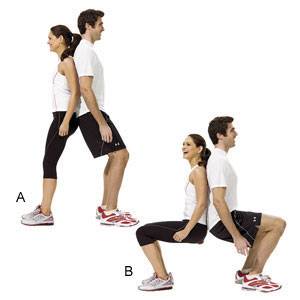Silicon Valley Eagles
The Silicon Valley Eagles Soccer Academy blog is a great source of soccer coaching tips, parents and players improvement tips and advises, and updates on the soccer world news.
Tips On How to Prevent Major Soccer Injuries
- Font size: Larger Smaller
- Hits: 3389
- Subscribe to this entry
- Bookmark
 As the soccer season begins, all youth soccer players are excited to start playing again. One thing to remember is that many injuries happen at the beginning of the season. Many of these injuries can be preventable! Below are some tips to help stay injury free for this soccer season and beyond:
As the soccer season begins, all youth soccer players are excited to start playing again. One thing to remember is that many injuries happen at the beginning of the season. Many of these injuries can be preventable! Below are some tips to help stay injury free for this soccer season and beyond:
Pre-season training:
Many kids enter their season with no off-season training, and their bodies aren’t prepared to play again. A preseason conditioning program should include proper full body warm-up, strength training, agility drills, and stretching.
Strength training is one aspect that can be easily overlooked. Strength training is important because it helps improve coordination, confidence, and help protects the body from injury. Here are some examples of good strength training exercises for young soccer players (recommended for ages 10+). Below are a few pictures of the body row, plank, and partner squat.
Legs: Partner squats, walking and side lunges, two leg bridges
Core: Leg Raises, side bends, planks (front and side), and crunches
Upper body: push-ups and body rows.
Notice all these are body weight exercises, so kids don’t need a gym or any equipment. They can do these at home or on a soccer field. They should start with 1-3 sets of 8-10 reps for each exercise and then can increase to 3 sets of 15 reps as the repetitions get easier. Correct form is very important, so make sure these exercises are done under direct supervision of a parent or coach.
Proper warm up:
A warm-up before practice or games helps to increase blood flow to working muscles and to “loosen up” tight muscles or ligaments. Example of a good warm-up:
For 5-10 minutes, do the following in 20 yard loops: forward jog, backward jog, forward skip, backward skip, carioca, side shuffle, one leg hopping, accelerated runs (start slow and accelerate as you near the 20 yard mark)
Proper equipment:
Equipment should always be the correct fit for each individual athlete. Don’t use hand-me-downs that are too big or too small. Also, make sure the equipment is soccer specific and appropriate for the surface of play. For example, different shoes are used on artificial turf versus grass. Proper soccer equipment can be weather dependent, such as if the playing surface is dry or wet. Proper footwear can aid in the prevention of ankle sprains or more serious injuries such as a torn ACL.
A good idea to ensure proper fit of soccer shoes and other equipment is to search online for a retailer that focuses on soccer. If a soccer-specific retailer is not available in your area, ask your youth soccer coach for a recommendation.







